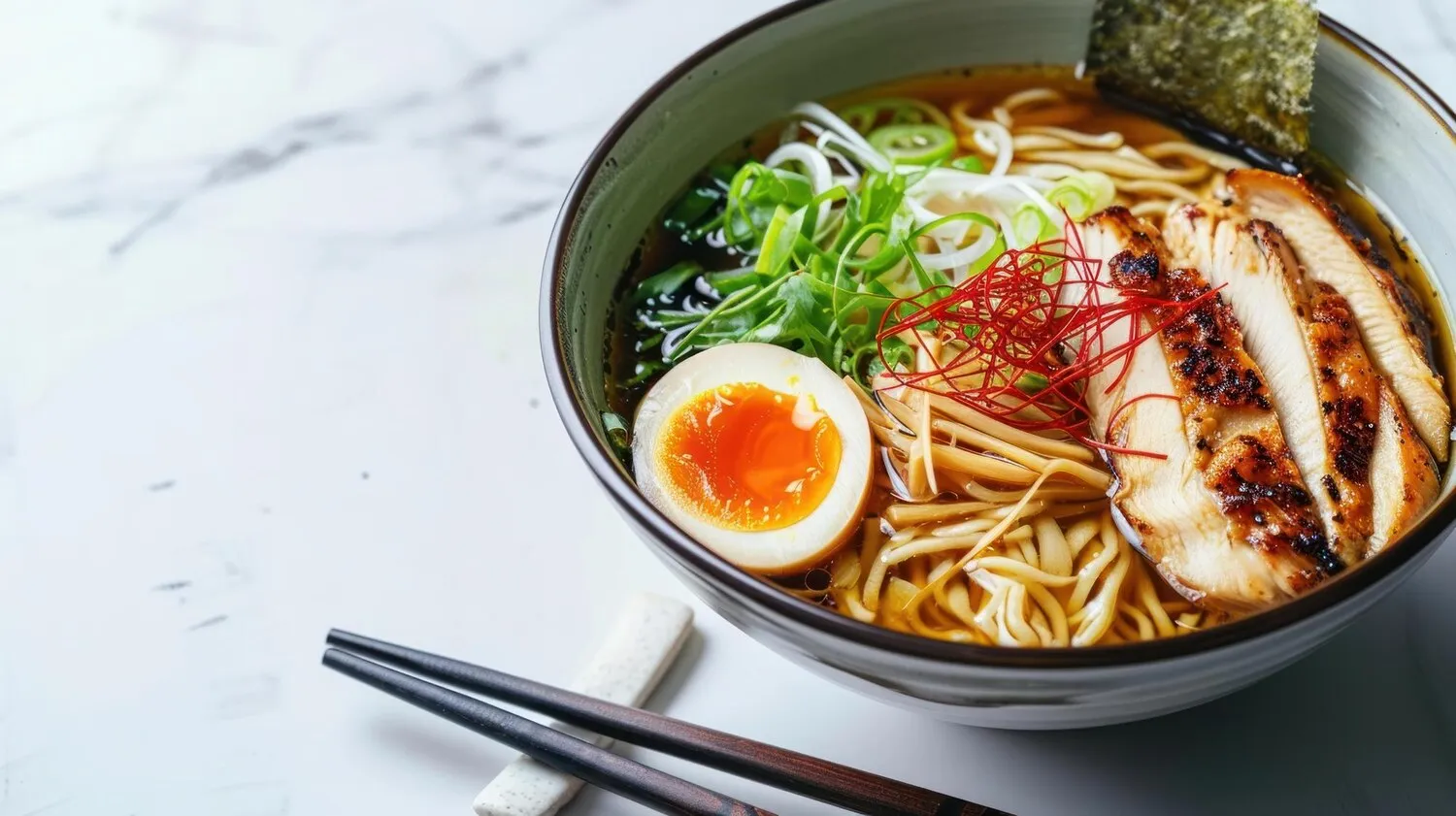
Udon
Thick wheat flour noodles served in a broth or with a dipping sauce.
Nutrition Facts
* The % Daily Value (DV) tells you how much a nutrient in a serving of food contributes to a daily diet. 2,000 calories a day is used for general nutrition advice.
Udon noodles have a long history in Japan, with various theories surrounding their origin. One popular theory suggests that they were introduced to Japan during the Nara period (710-794 AD) by Buddhist monks who brought wheat flour noodles from China. Over time, these noodles were adapted to Japanese tastes and ingredients, evolving into the thick, chewy udon noodles we know today. Another theory suggests that udon evolved from a type of dumpling called 'konton' brought over from China.
Udon is a staple food in Japan, enjoyed by people of all ages and socioeconomic backgrounds. It represents comfort food, often associated with warmth, simplicity, and tradition. Its versatility allows for regional variations and personal preferences, making it a beloved dish throughout the country.
Regional Variations
Different regions of Japan have their own unique udon styles, with variations in broth, noodles, and toppings. For example, Sanuki udon from Kagawa Prefecture is known for its firm, chewy noodles, while Inaniwa udon from Akita Prefecture is thinner and smoother. Hakata udon from Fukuoka has softer noodles and toppings like gobo tempura (burdock root tempura).
Seasonal Significance
Udon is enjoyed year-round in Japan, with seasonal ingredients often incorporated into the dish. In the winter, hot udon with warming toppings is popular, while in the summer, chilled udon noodles with a refreshing dipping sauce is a common choice.
Social Gathering
Udon restaurants are popular places for families and friends to gather and enjoy a quick, affordable, and satisfying meal. The communal nature of sharing a large bowl of udon adds to the social aspect of the dish.
Udon offers a diverse range of flavors depending on the preparation and toppings. Generally, it features a savory, umami-rich broth or dipping sauce, complemented by the subtle wheat flavor and satisfying chewiness of the noodles.
The broth (dashi) is typically made from kombu (kelp) and katsuobushi (dried bonito flakes), providing a base of umami. Soy sauce, mirin (sweet rice wine), and sake are added to season the broth. Common toppings include thinly sliced meat (beef, pork, or chicken), tempura (battered and deep-fried seafood or vegetables), aburaage (deep-fried tofu pockets), kamaboko (fish cake), scallions, and a raw or soft-boiled egg. The flavors can range from light and delicate to rich and robust, depending on the regional variation and the ingredients used.
Noodle Texture
The texture of the udon noodles is crucial. They should be firm, chewy, and slightly slippery. Overcooking will result in mushy noodles. If cooking from dried noodles, follow the package instructions carefully and test for doneness frequently.
Broth Quality
A good dashi broth is the foundation of delicious udon. Use high-quality kombu and katsuobushi for the best flavor. Avoid over-boiling the dashi, as it can become bitter. Adjust the seasoning to your preference.
Topping Combinations
Experiment with different toppings to create your own unique udon variations. Consider the balance of flavors and textures when choosing toppings. Popular combinations include tempura and soft-boiled egg, beef and scallions, or aburaage and kamaboko.
Noodle Cooking Water
Cook the noodles in plenty of rapidly boiling water so they don't stick together. After cooking, immediately rinse the noodles under cold water to remove excess starch and stop the cooking process. This will help them maintain their chewy texture.
Explore additional Soup, Noodles dishes and restaurants
Explore Soup, NoodlesDiscover top dining spots and culinary experiences in Milano.
Explore MilanoLearn more about the food culture, restaurant scene, and culinary heritage of Italy.
Explore Italy